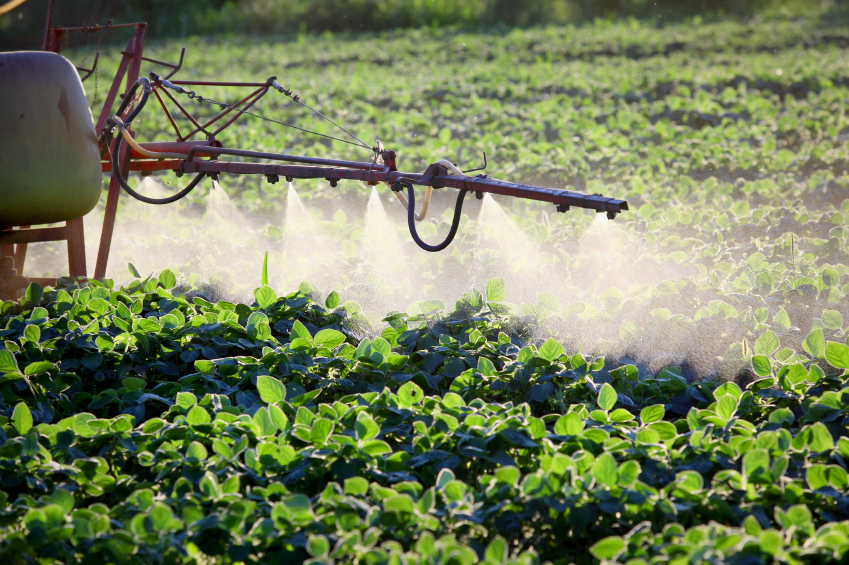
Simazine — toxicity, side effects, diseases and environmental impacts
Friday, November 17, 2017 by Zoey Sky
http://www.naturalpedia.com/simazine-toxicity-side-effects-diseases-and-environmental-impacts.html

Simazine is a selective triazine herbicide, and is used to control broad-leaved weeds and annual grasses in fields, berry fruits, nuts, vegetables, ornamental crops, turfgrass, orchards, and vineyards. The herbicide appears as a colorless to white solid.
Simazine is used for nonselective weed control at higher rates in industrial areas. Available in wettable powder, water dispersible granule, liquid, and granular formulations, simazine may also be soil-applied.
Simazine’s trade names include Aquazine, Caliber, Cekusan, Cekusima, Framed, Gesatop, Primatol S, Princep, Simadex, Simanex, Sim-Trol, Tanzine, and Totazine. The herbicide may also be found in formulations with other herbicides like amitrole, paraquat dichloride, metolachlor, and atrazine. Simazine is a General Use Pesticide (GUP), and it is in Environmental Protection Agency (EPA) toxicity class IV – practically nontoxic.

List of known side effects
Symptoms of exposure to simazine may include contact dermatitis, slight edema, erythema, pruritus, and burning. The herbicide may cause skin and eye irritation. Simazine may also cause liver and kidney damage, coma, or convulsions. When heated to decomposition it emits toxic fumes of chloride ion and nitrogen oxides (NOx).
Simazine may also cause respiratory irritation and drowsiness or dizziness. The herbicide is also suspected of causing cancer and damaging fertility or the unborn child. Simazine can damage organs through prolonged or repeated exposure and it is very toxic to aquatic life.
Body systems affected by simazine
Overall, 21 incidents involving simazine were reported to the Office of Pesticide Program‘s (OPP) Incident Data System (IDS). The bulk of these incidents involved irritant effects to the eyes, skin, and respiratory passages and several involved general central nervous system effects (e.g., nausea, dizziness, headache, restlessness). Poison Control Incident data (1993-2001) indicated that simazine could be much less acutely toxic than other pesticides. Majority of symptoms reported caused by exposure to simazine were eye, dermal, and throat irritation.
Items that can contain simazine
The herbicide simazine is used to control pests such as ivy-leaved speedwell, rocket, shepherd’s purse, dead nettles, goosefoot, and bindweed. Simazine also suppresses volunteer cereals.
Simazine can be applied to fruits like berries, currants, apples, and pears. It is also used on hops, almonds, vines, canola, chickpeas, beans, and lupins
How to avoid simazine
In activities and situations where overexposure to simazine may occur, wear a self-contained breathing apparatus and personal protective clothing. If contact occurs, immediately flush affected skin or eyes with running water for at least 15 minutes. Remove contaminated clothing and shoes at the site.
While simazine does not ignite easily, it may burn and produce irritating and poisonous gases. For fires involving simazine, extinguish with dry chemicals, CO2, Halon, water spray, fog, or standard foam.
Simazine may be shipped domestically via air, rail, road, and water, in containers bearing the label “Poison.” Simazine should be stored in its original container in dark, well-ventilated areas, away from heat, sparks, and other sources of ignition.
Small dry spills of simazine may be placed into a clean, dry, covered container for later disposal, but ensure that liquid solutions are first absorbed in sand or other noncombustible absorbents. Large liquid spills should be diked far ahead to prevent simazine from entering water sources and sewers. Before implementing the land disposal of simazine, check with regulatory agencies for proper guidance.
Where to learn more (bulleted)
- Pesticides continue to contaminate US streams, USGS report says
- Hawaii’s Department of Agriculture sued for dumping hazardous pesticides into waterways
- EPA settlement forces agency to assess dangers of glyphosate, atrazine and related pesticides
- Toxins.news
- Pesticides.news
Summary
Simazine is a selective triazine herbicide that is used to control broad-leaved weeds and annual grasses. The herbicide appears as a colorless to white solid.
Symptoms of exposure to simazine may include contact dermatitis, slight edema, erythema, pruritus, and burning.
Simazine can irritate the eyes, skin, and respiratory passages. The herbicide is also bad for the central nervous system.
Sources include:
Tagged Under: Tags: Simazine





